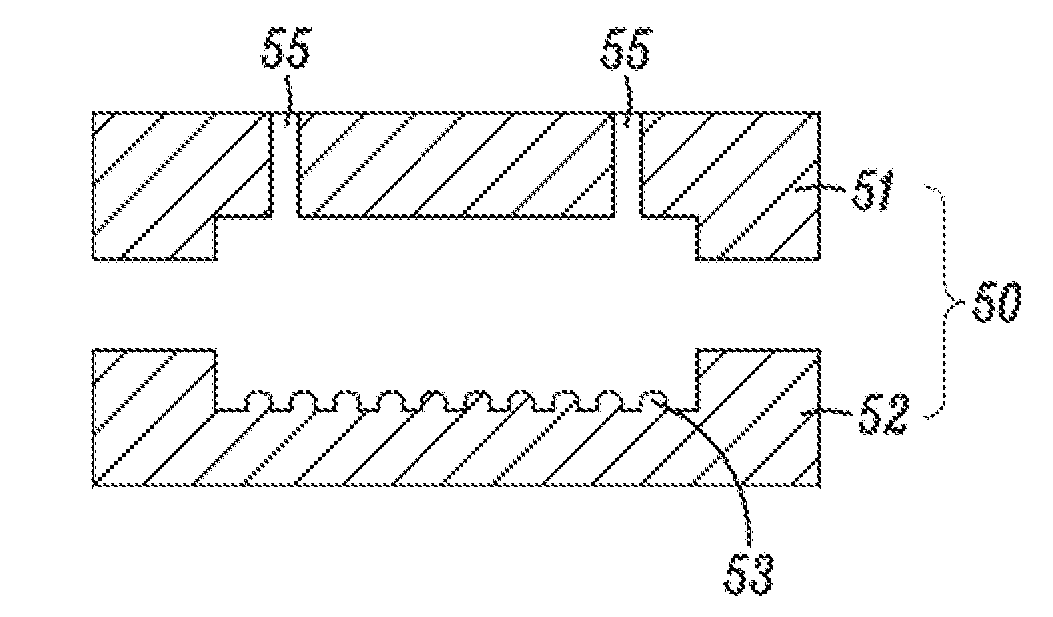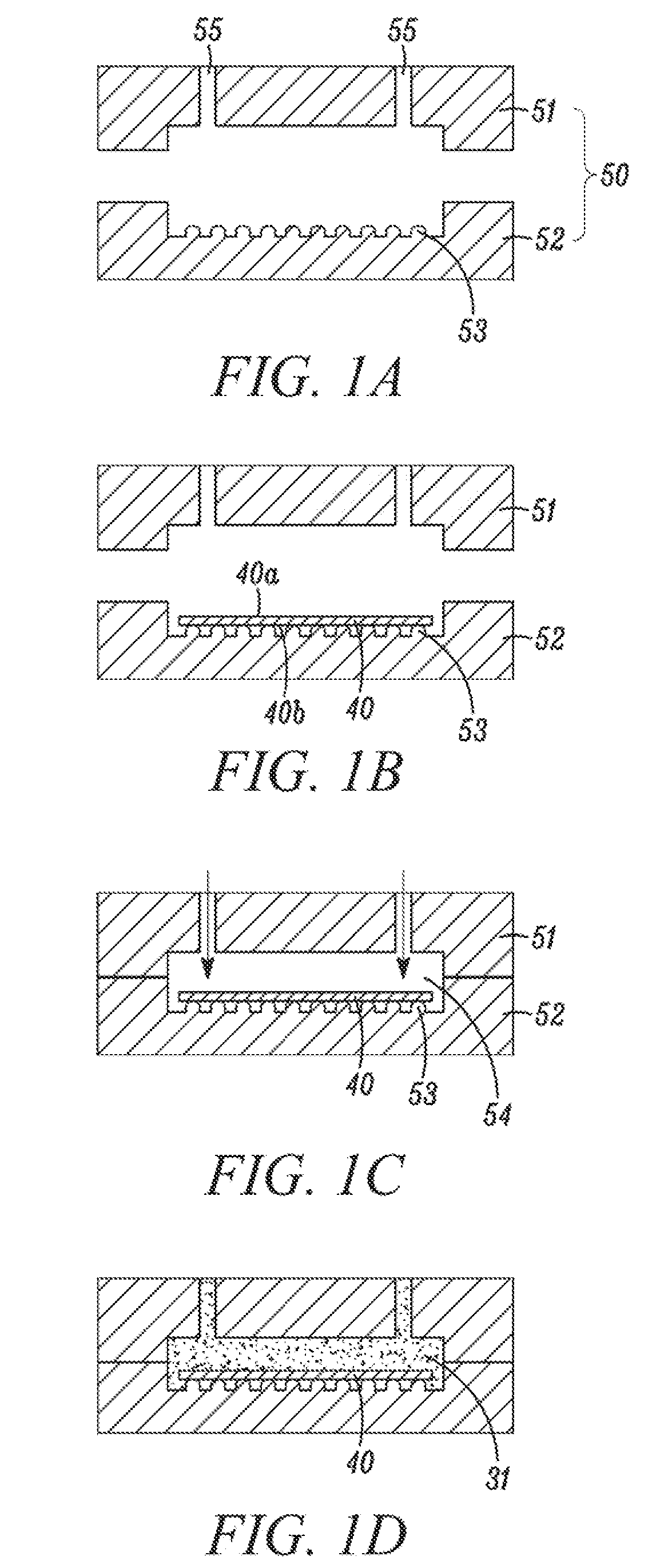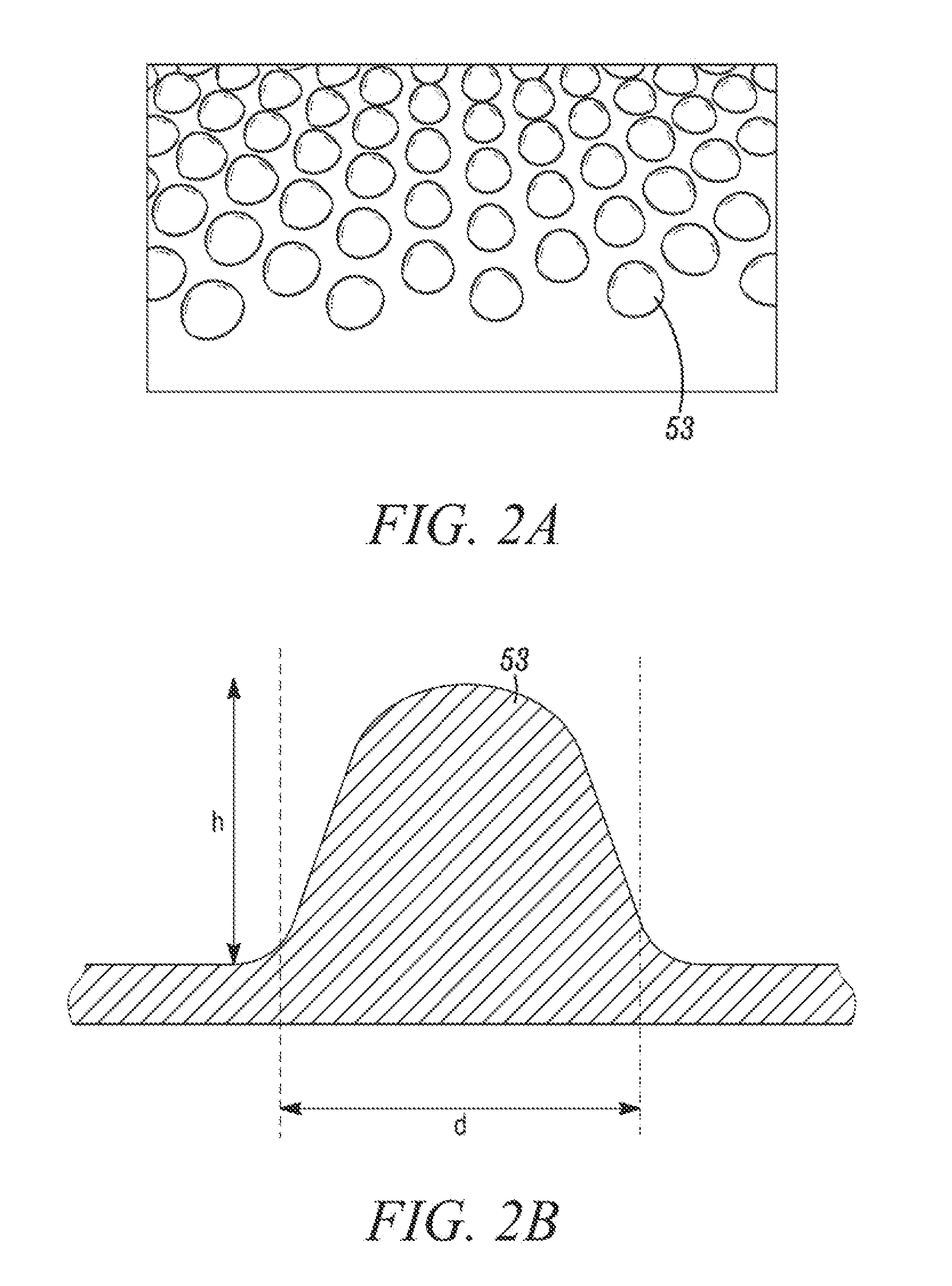Interior paneling part comprising a planar heating element and method for the production thereof
a technology of interior paneling and heating elements, which is applied in the direction of vehicle heating/cooling devices, transportation and packaging, and other domestic articles, can solve the problems of insufficient embedding of heating elements in foam bodies, inability to meet the needs of interior paneling, etc., to achieve the effect of easy and convenient shaping, avoiding inhomogeneity in composites, and reducing or avoiding inhomogeneity
- Summary
- Abstract
- Description
- Claims
- Application Information
AI Technical Summary
Benefits of technology
Problems solved by technology
Method used
Image
Examples
Embodiment Construction
[0056]Unless indicated otherwise, identical or functionally equivalent components are denoted by the same reference numerals in the figures. Further modifications mentioned in this context can be combined with each other to form new embodiments.
[0057]FIGS. 1A to 1D show sectional views of a mold tool 50, which is used to implement the methods according to the present disclosure for producing an interior trim part 1. More specifically, FIGS. 1A to 1D each show a stage of the production method.
[0058]As is shown in FIG. 1A, a suitable mold tool 50 has two mold halves 51 and 52. Each of these can have a cutout, which together define a mold cavity 54. The mold tool 50 further has feeds 55 via which a foam material 31 can be introduced into the mold cavity 54. The division of the mold tool 50 into two mold halves 51 and 52 shall only be understood as an example here. The shown embodiment of the mold cavity 54 is also only provided to better illustrate the basic idea of the disclosure.
[005...
PUM
| Property | Measurement | Unit |
|---|---|---|
| diameter | aaaaa | aaaaa |
| distance | aaaaa | aaaaa |
| diameter | aaaaa | aaaaa |
Abstract
Description
Claims
Application Information
 Login to View More
Login to View More - R&D
- Intellectual Property
- Life Sciences
- Materials
- Tech Scout
- Unparalleled Data Quality
- Higher Quality Content
- 60% Fewer Hallucinations
Browse by: Latest US Patents, China's latest patents, Technical Efficacy Thesaurus, Application Domain, Technology Topic, Popular Technical Reports.
© 2025 PatSnap. All rights reserved.Legal|Privacy policy|Modern Slavery Act Transparency Statement|Sitemap|About US| Contact US: help@patsnap.com



